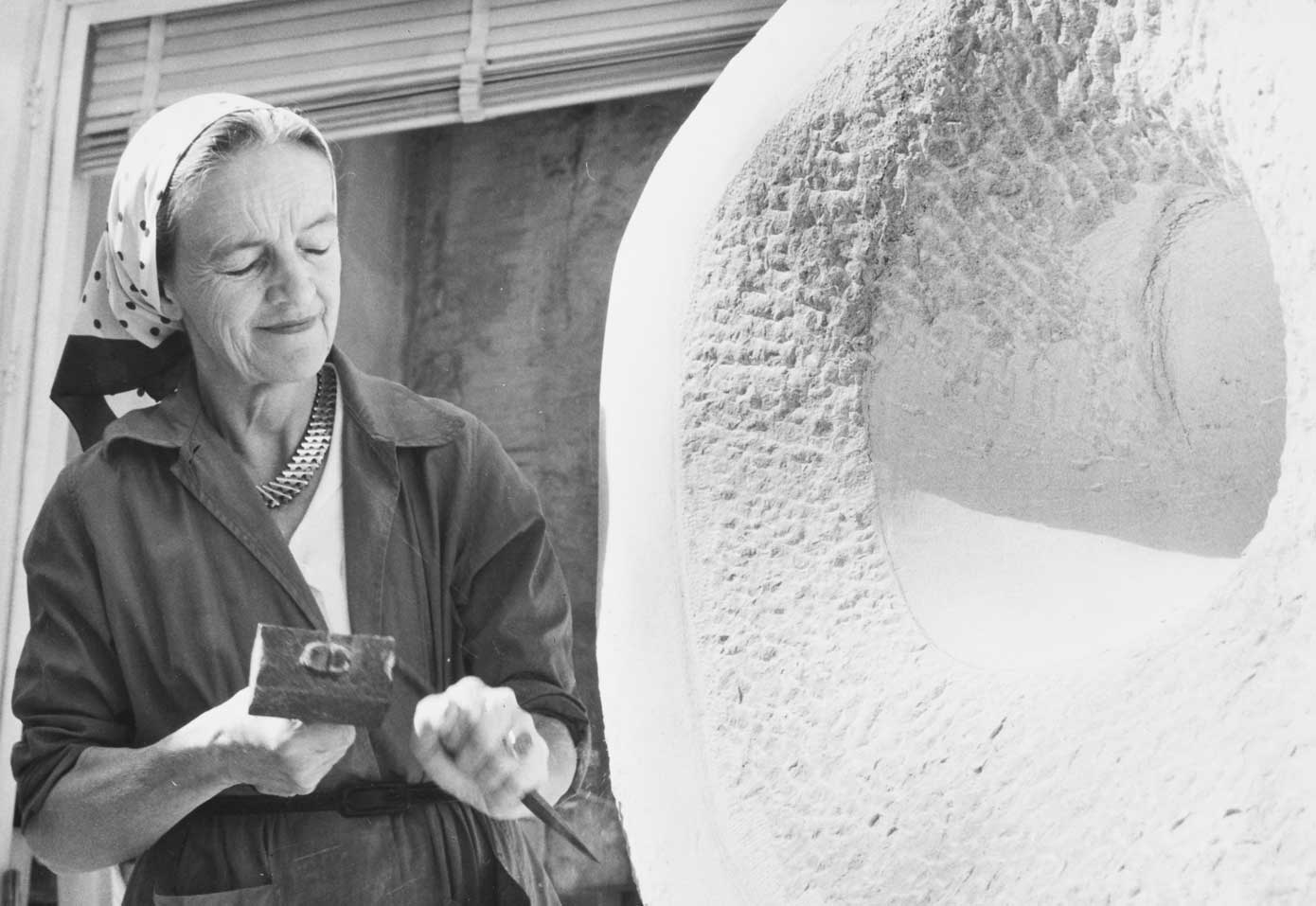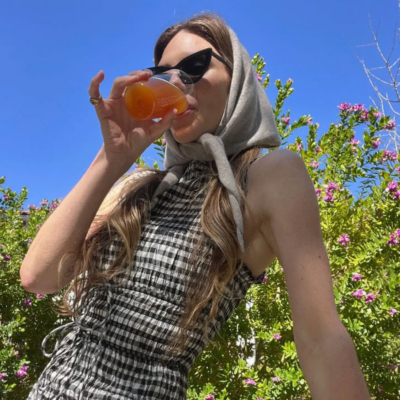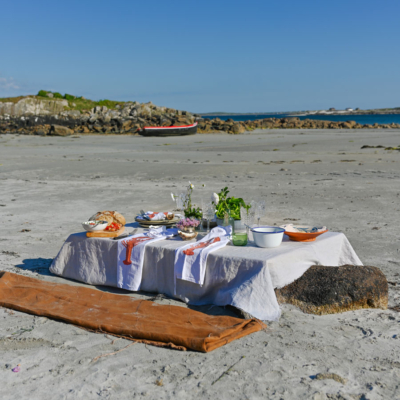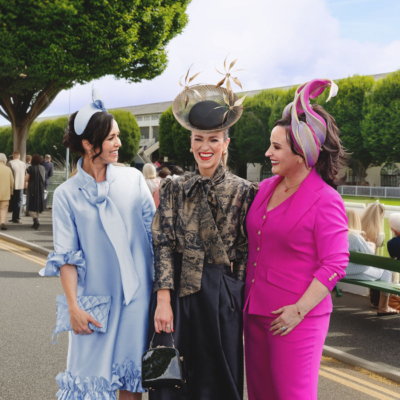An artist’s life is a continual push for self-expression. What they wear can be a tool in their practice, a signal of their desire for change, or their satisfaction with the status quo. Fashion journalist Charlie Porter decodes their clothes …
On a Wednesday evening in May, the Tate threw a cocktail party in Venice. It was the opening week of the Biennale, the festival of international art held in the city every other year. The gathering was at Scuola Grande di San Rocco, its walls and ceilings covered with vast paintings by the 16th-century artist Tintoretto. The invitation read: “Dress code: Lounge suit”.
According to Debrett’s, advisers on etiquette, a lounge suit is, for men, “a suit worn with shirt and tie”. For women, “a smart, or cocktail, dress (with sleeves or a jacket)”. Down the front, there were formal speeches from the Gallery’s chairman and director. At the back of the hall stood Charlotte Prodger in a long-sleeved white T-shirt. Five months earlier, Prodger had won the Turner Prize, one of the most prestigious prizes in art.
Nearby was Helen Marten, another previous winner. She wore a black trench coat, a white shirt and blue utility pants. Her partner, Magali Reus, a recent nominee for the Hepworth Prize for Sculpture, was wearing a silk shirt, jeans and sneakers. The artist Anthea Hamilton, once a Turner nominee, arrived in a tiered and sequined dress that you would not call “smart, or cocktail’: she later described it as “Edwardian”. She wore it with sneakers and, because it was pouring with rain outside, an overcoat. A few feet away was Helen Cammock, one of that year’s Turner nominees. Cammock was wearing a grey T-shirt and trackpants. On her feet were sneakers.

Photograph via ESTATE OF LUCIE RIE. Ceramicist Lucie Rie was born and raised in Austria, fleeing to London in 1938. Here is Rie, with an example of her work, in her potter’s apron.
These five women are among the most vital artists of our time. Most of them are queer. Each lives and makes work within a patriarchal society and art world. They are supposed to play along with its structures, even if their work pushes against them. Clothing makes this tension abundantly clear.
Our clothing is an unspoken language that tells stories of our selves. What you are wearing right now is sending messages about who you are, what you think, and how you feel. This goes beyond the limitations of fashion: it is a daily, even hourly, signalling of our beliefs, emotions, intentions. Much of it is intuitive: we sharpen up to impress; cocoon ourselves when we’re feeling blue; make an effort on a date. But when we put on our clothes, we don’t fully acknowledge their loaded meaning. We just wear them.

Photograph via NANCY R SCHIFF/GETTY IMAGES. Louise Nevelson was born in what’s now the Ukraine. Her parents suffered from depression, her mother dressing extravagantly to retain a link to their homeland. Her influence on Nevelson’s own style is clear.
Many of us make daily compromises when we get dressed to go to work. Our clothing then carries other social meanings: power and ambition or acquiescence, humility or arrogance, repression and exploitation.
For women, dressing for work presents a tougher challenge than it does for men.
Artists live a different way. The work of an artist is not office based. It breaks from the rhythm of 9 to 5, weekdays and weekends. It is a continual push for self-expression. Artists create their own circumstances, their studios becoming self-contained worlds. Their work can question, or it can reinforce, generally accepted ways of being. What artists wear can be a tool in their practice. Their clothing can tell of their desire for another mode of living or, sometimes, their conscious subscription to the status quo.

Photograph via TONY EVANS/TIMELAPSE/GETTY IMAGES. Breton stripes were a symbol of youth and rebellion and a style signature of Picasso, for instance. Here’s artist Frank Bowling at work in London in 1965.
Artists are often revered for their style. I have friends who pin photographs of artists around their mirrors as inspiration – snapshots of Georgia O’Keeffe, Barbara Hepworth. Fashion houses regularly plunder these images, copying their outfits as part of the relentless fashion cycle. It seems logical that an artist should have an eye for clothing, connected with the visual creativity of their work. When we really look at images of artists, we realise it goes deeper than that. There is more to what artists wear than just an appreciable way with clothing.
To approach an artist just as a style icon can strip away the reality of their life and work. Art isn’t easy. It can be a lonely pursuit. Countless artists are ignored, acknowledged late in life or even only after their death. For many, their work is necessarily more important than recognition. Evidence of this sense of purpose, despite it all, is also found in their clothing. What they wear is testament to this fearlessness, this focus.

Photograph via ROSEMARY MATHEWS / BOWNESS. There was purpose to the functionality of Hepworth’s clothing, photographed here in 1960. She preferred to carve in the open air, to connect with the nature that informed her work. She was fond of zip-up technical jackets and roomy overalls with elasticated waists and practical pockets. She wore a scarf to protect her hair from dust.
This is not to deify artists: how boring, how false. How much do we miss of someone’s complexities if we put them on a pedestal? This goes for their work, their lives, and also what they wear. It dehumanises Frida Kahlo to treat her garments as sacred relics. To talk of her in platitudes limits our understanding.
I’ve often found that, when I ask someone about their clothes, they soon start talking about so much else: how they live, what they do, how they think, what they want. Clothing is a way in.
By studying the garments of artists, we are able to approach them as human beings. Once we break from the assumption that artists are godlike, we can disrupt the canon, an art-historical tradition dominated by white men. In the process, we can look again at the meaning we attach to our own clothes, and free ourselves from ways of being that seek to keep us in our place.
British artist Barbara Hepworth was a sculptor of monumental forms who strove for humanity in her carvings. She moved from London to Cornwall at the outbreak of the Second World War and settled in St Ives in 1950, where she lived for the rest of her life.
On a Sunday in June 1944, a year before the war’s end, she wrote a long letter about clothes to one of her closest friends, Margaret Gardiner. They corresponded often, but this is the only known letter where Hepworth talked about clothing. She was 41.

Photograph via SELF-PORTRAIT WITH FRIED EGGS, 1996. SADIE COLES HQ. Sarah Lucas made her most celebrated self-portrait, “Self Portrait with Fried Eggs”, in 1996, but it looks as if it could been taken today.
“The average older woman’s clothes are appalling, at the same time there is nothing more painful than dressing in clothes too young, or too obvious in colour & form,” wrote Hepworth.
“We have to evolve some personal style that is an inspiration to ourselves. Inspiration is a necessity otherwise one is overcome by tiredness.”
Hepworth shows some embarrassment in talking about clothing at all. She adds a note written vertically down the side of the page in tiny letters. “This all sounds a bit silly (apropos of your remark about wanting new clothes) but evolving the personality in clothing is v. important & so difficult now.” At the end of the note she writes: ‘‘I’m really keenly interested in the outward expression of social events as seen in clothing – it has always been most expressive & violently so before this war started. So it’s natural to think about it & as you say to want new clothes.”
The letter places Hepworth’s choice of clothing within the wider context of her desire for change. It also reveals the self-ridicule that often goes with an interest in clothing. Hepworth’s work helped define a post-war optimism and idealism in British art and design. Her letter to Gardiner shows that she saw her clothing as part of the same drive. From her wardrobe after the war, it is clear that she found “outward expression of social events” in functional clothing.

Photograph via FRANCIS BACON 1974 / MICHAEL HOLTZ/ALAMY / ARTWORK. Francis Bacon lived and worked in chaos: why did he not show it in what he wore? Here’s a photograph of Bacon in his South Kensington studio in 1974. Once more, spotless clothing.
In 1965, aged 62, Hepworth became a Dame, and, according to her granddaughter Sophie Bowness, felt she should begin dressing more like a dame. Two years later, she broke her femur. Bowness said it restricted her mobility, making her less able to carve. The change in her status and abilities led to a change in her wardrobe. Hepworth got into furs. In the Hepworth archives is a note that lists her furs, and where they were worn: Long Russian Ermine white coat. BH to wear it to Tate on 15 Feb 67. Squirrel Kaftan (for informal occasions) Chilean fox jacket & hat (for working in). In a way, fur has function: it must have been warming to a body that was to live for over 70 years. In Hepworth’s time, there were fur shops on British high streets. Attitudes have rightly changed.
What Artists Wear by Charlie Porter, is published by Penguin.
LOVETHEGLOSS.IE?
Sign up to our MAILING LIST now for a roundup of the latest fashion, beauty, interiors and entertaining news from THE GLOSS MAGAZINE’s daily dispatches.











